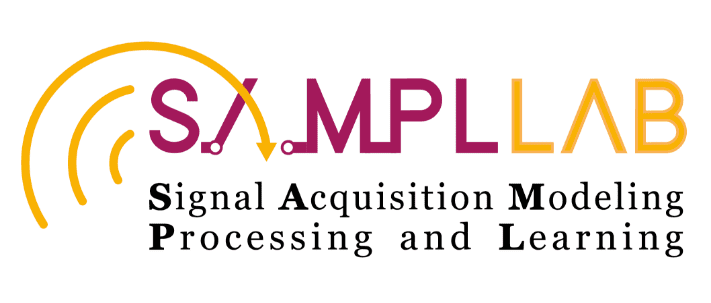Deep Cognitive Sparse Arrays for Automotive Radar
Sparse Arrays and DOA Estimation
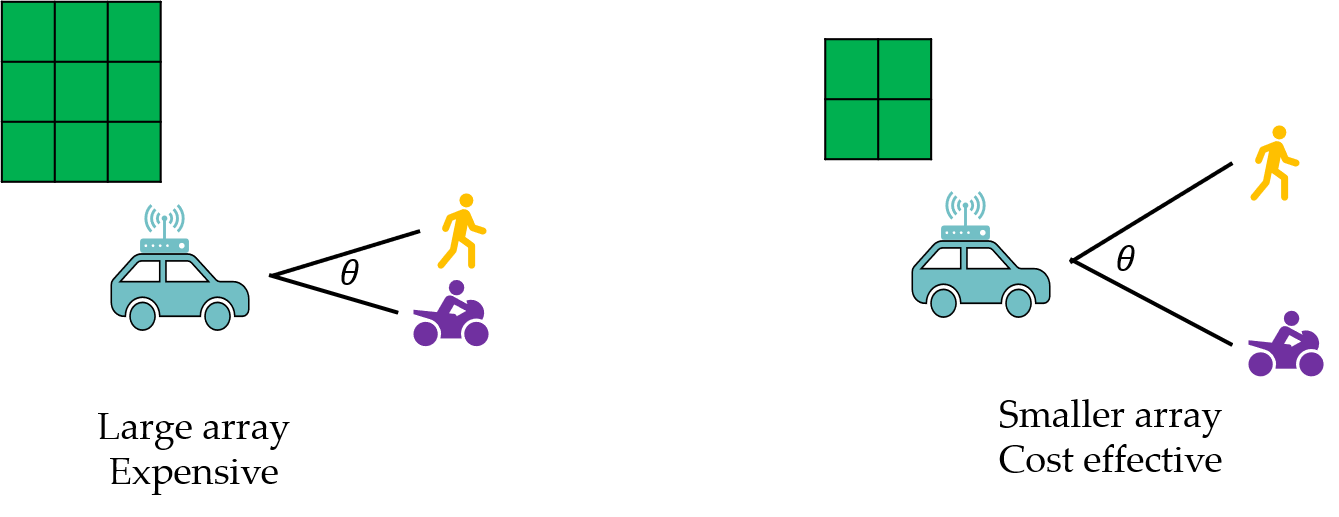
Direction-of-arrival (DOA) estimation is an important problem in applications such as autonomous driving systems, radio astronomy, source-localization, and more. In a DOA estimation problem, the angular resolution is inversely proportional to the number of antenna elements. Hence, high-resolution DOA estimation requires a large number of elements. However, there are several practical problems with large arrays, such as hardware complexity, and high-computational complexity due to a large volume of data generated from a full array, and high-power requirements to simultaneously operate all the elements of the full array.
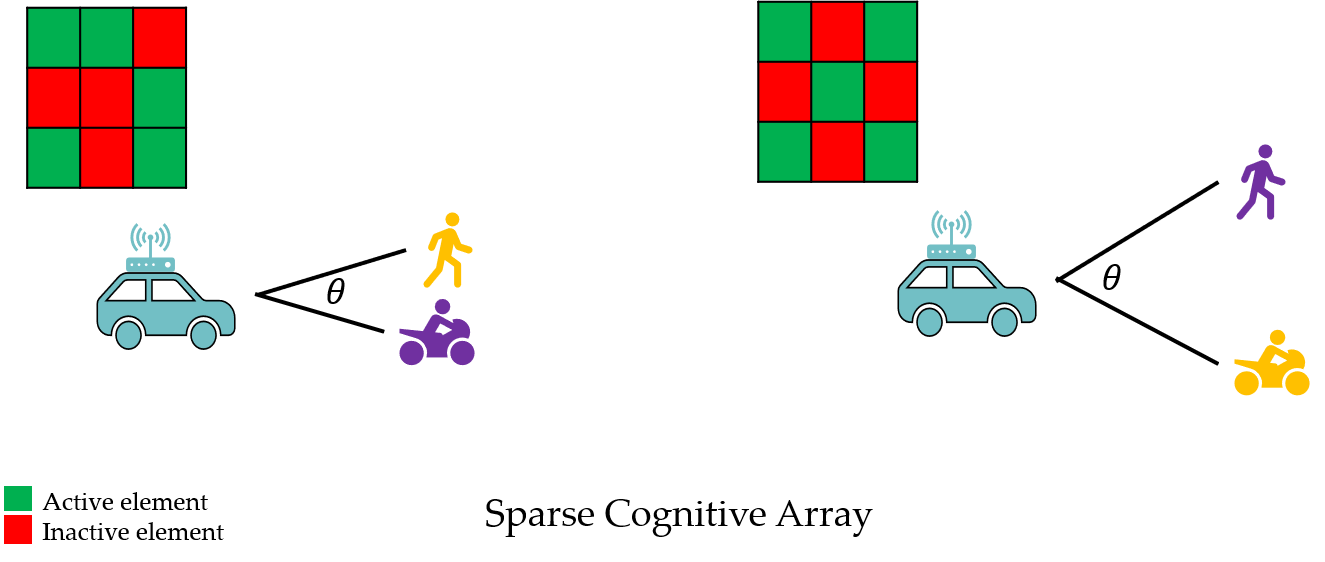
In practice, the Tx pulse is often distorted during transmission and reflection. With the distortion, the received signal can still be modeled as a linear combination of shifted-pulses but the pulse shape is unknown.
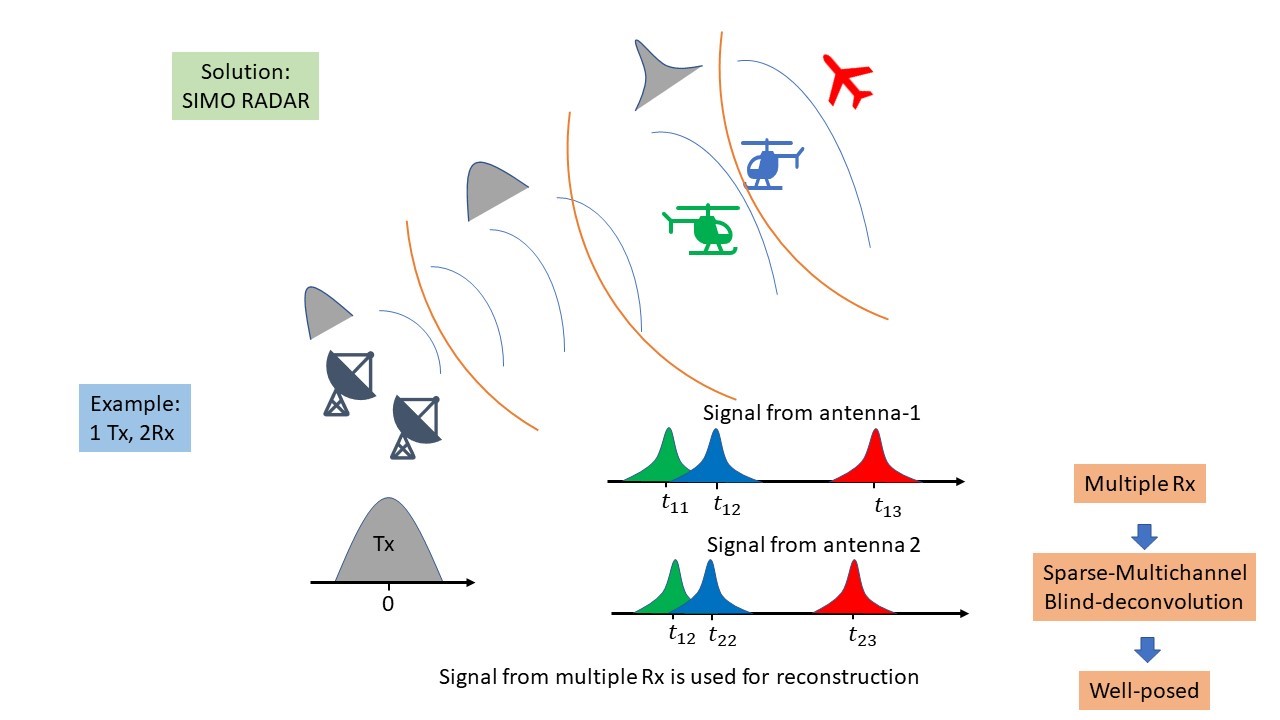
To address the practical problems while keeping an acceptable resolution limit, a sparse array, consisting of few elements of the full array, can be selected. Random selection is the simplest technique, however, it does not always leads to satisfactory performance. Hence, a selection process that minimizes error statistics is a better choice. Specifically, the selection of sparse array should adapt to the target scene that will lead to cognitive sparse array. Further, since the ground-truth DOAs are unknown, it is desirable to consider methods that do not explicitly depend on the ground truth.
A supervised learning-based solution is naturally suitable to the problem at hand. We show a deep-learning (DL) based approach for sparse antenna selection is developed. The problem of selection of a sparse array from a full one is posed as a classification problem and a convolutional neural network (CNN) is trained to solve this problem. The method does not require knowledge of the ground-truth DOAs and has less error in estimation of DOAs compared with that of the random selection method. However, the applicability of the method is limited to smaller arrays as training the labels is performed by minimizing the Cramer-Rao lower bound (CRLB) through an exhaustive search method. To scale the results to a larger array, we proposed the use of an efficient subset selection technique for training data generation. The proposed approach is based on a submodular optimization-based greedy method where the number of computations is proportional to the number of antennas selected.
In this demo, we show the applicability of our proposed sparse array selection method for estimating DOAs. We demonstrate two systems; one operates at 2.4 GHz and another at 5 GHz. These demos were presented at ICASSP 2019, ICASSP 2020, and RadarConf 2020.
Deep Sparse Array at 2.4 GHz

Hardware Details:
The Rx antenna array operates at 2.4 GHz and it is fixedly divided into 16 sets of 4 patch antennas each. Only one antenna of each set can be selected at a time, via 4 to 1 high-speed selector. The receiver board consists of a downconverter board, two analog to digital converter (ADC) cards and a field-programmable gate array (FPGA) board, where the received analog signal is converted to the baseband digital signal. Its first step is to down-convert the amplified analog signal to baseband by a downconverter board which will mix the received signal with a local oscillator and pass it through a baseband filter. After analog down conversion, an eight-channel FMC168 ADC card is adopted to sample the analog baseband signal. Then the VC707 FPGA-based processing board transmits the digital outputs to the host PC controller in a high-speed mode where they are utilized for estimating the target DOA.
Results:
The Graphical user interface (GUI) is shown below, wherein a single sparse array is presented in both the plane and 3D view. In the sparse array demo, the full array is formed by 16 antennas in the shape of either uniform rectangular array, diamond or a random pattern. To address adaptation in dynamic automotive environments, we implement various options in the demonstration. For example, users can choose a combination of the following configurations: six different target scenarios, three different antenna array patterns, three different numbers of antennas used in each sub-array and four decreasing noise levels. The detail view at the bottom shows the antenna patterns and beam patterns for the full array and three sub-arrays based on the configurations presented above. On the right side, we compare the performance of the full array and three selected sub-arrays in terms of the estimated DOA as well as the root mean-squared error (RMSE), simultaneously for all the targets.
Next, we compare the performance of different antenna selection methods. To avoid interference due to wireless networks, specifically WiFi operating at 2.4 GHz, the data is transmitted through cables instead of over the air. In particular, we employ a 16 channel transmit-board. The performance of the proposed cognitive array selection strategy under different SNR values is shown below. Comparing the DOA estimation performance of three sub-arrays, the proposed CNN approach effectively selects the best sub-array for a large range of SNR and it provides effective performance as compared to random selection. Especially, the CNN-based method has 6 dB lower RMSE compared with random selection in the case of MUSIC estimation results.
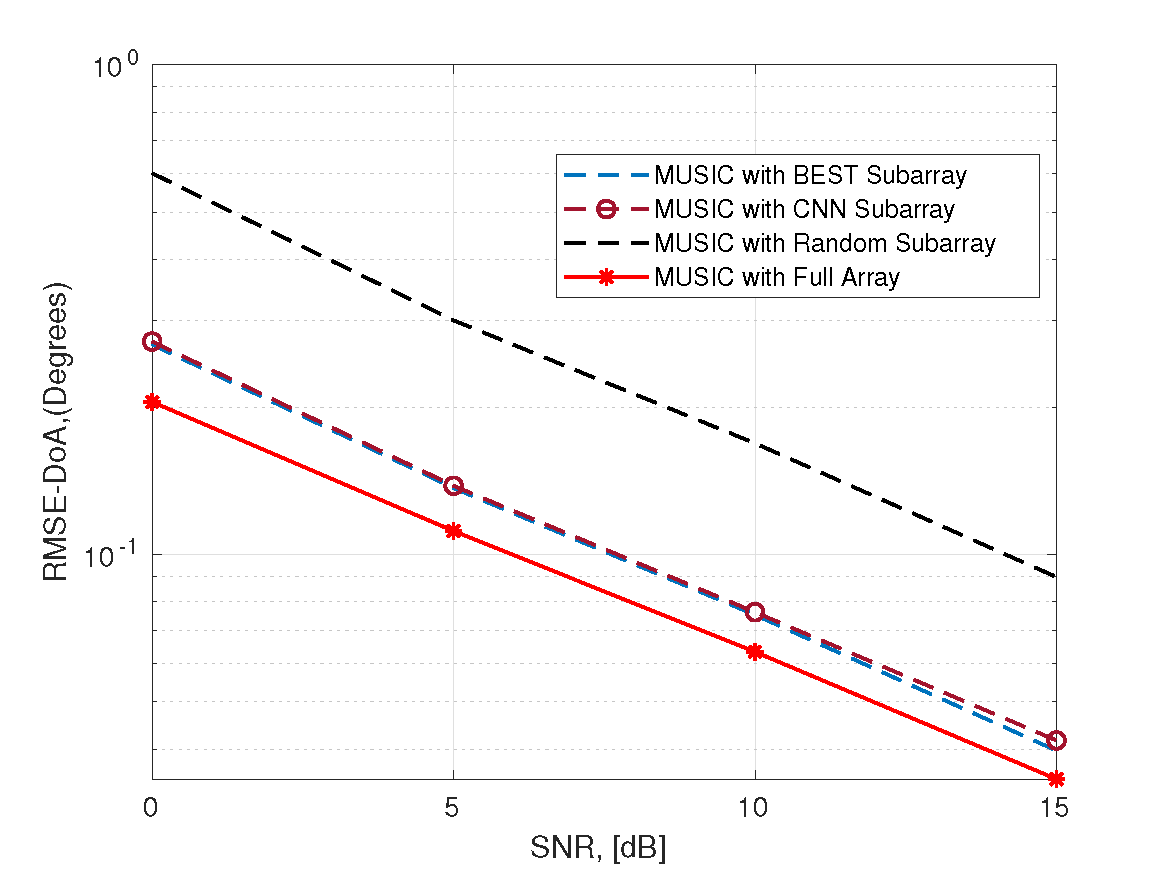
Scalable Deep Sparse Array at 5 GHz
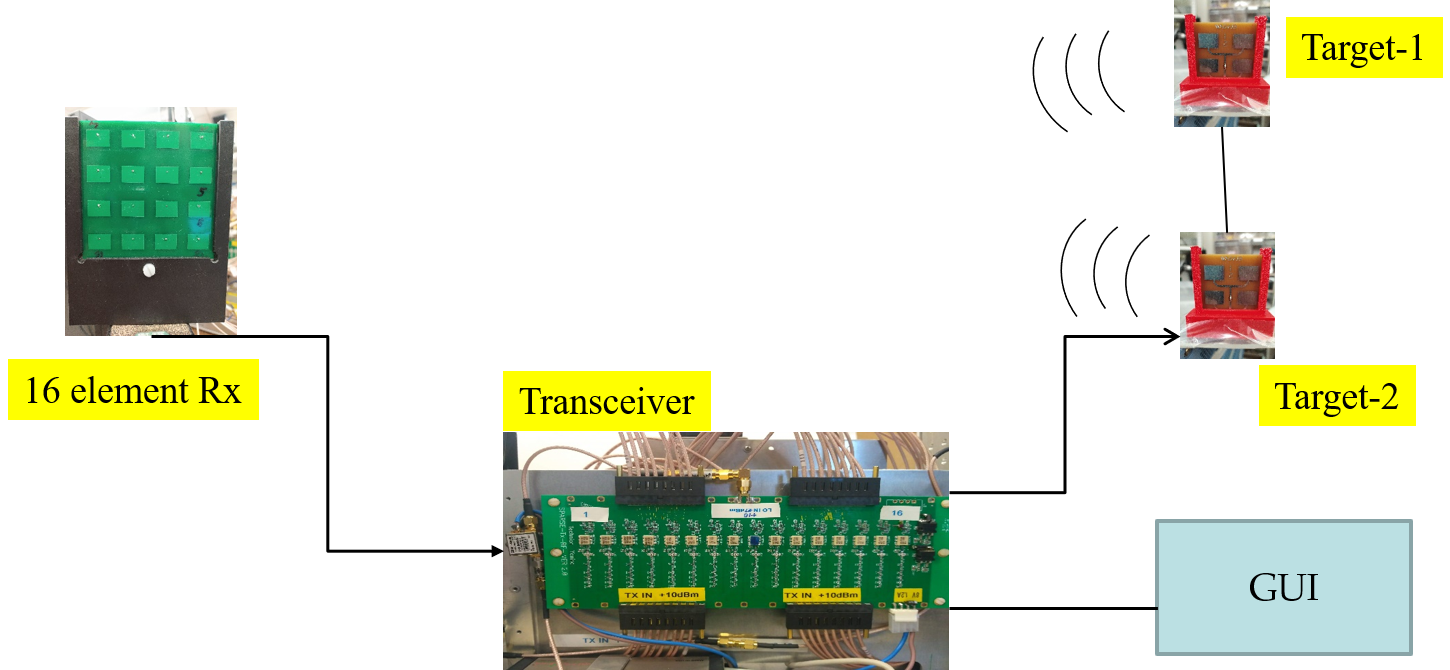
A schematic of the proposed hardware is shown in the figure above which consists of the following main blocks: a receive (Rx) antenna array, a receiver board (Rx board), a personal computer (PC) controller with a graphical user interface, and transmitting antennas (Tx). The Rx antenna array is a uniform rectangular array (URA) which contains 16 antennas, working at 5 GHz. The receiver board is composed of a downconverter board (mixing part and Local oscillator), two analog-to-digital converters, and a field-programmable gate array (FPGA) board. The VC707 FPGA-based processing board transmits the digital samples to the host PC controller at a high-speed mode. The PC controller utilizes the digital samples and implements an algorithm for DOA estimation. The targets, whose directions with respect to the receiver antenna array are to be estimated, are realized by quad-array transmitters that are transmitting sinusoidal signals. In this demo, we consider the problem of estimating the DOAs of two targets which transmit signals at 5.2 GHz and 4.8 GHz, respectively. The signals from the targets are received through a full rectangular array composed of N=16 antennas. The DOAs are then estimated through full as well as several sparse array selection methods.
Results:
The graphical user interface (GUI) is shown below, where the target map shows the angular relationship (DOA) between the receiver and targets. In order to show the selection results of different algorithms for selecting the sparse array, we visualize the algorithm selection results in real-time. The different array selection techniques are compared in terms of MSE in the estimation of DOAs. We observe that the exhaustive search based CNN method and the greedy-CNN method performs equally well for different signal to noise ratios. The CNN-based methods perform better than the random selection strategy.
Fast-Learning Sparse Antenna Array for Automotive Radar and DOA Estimation:
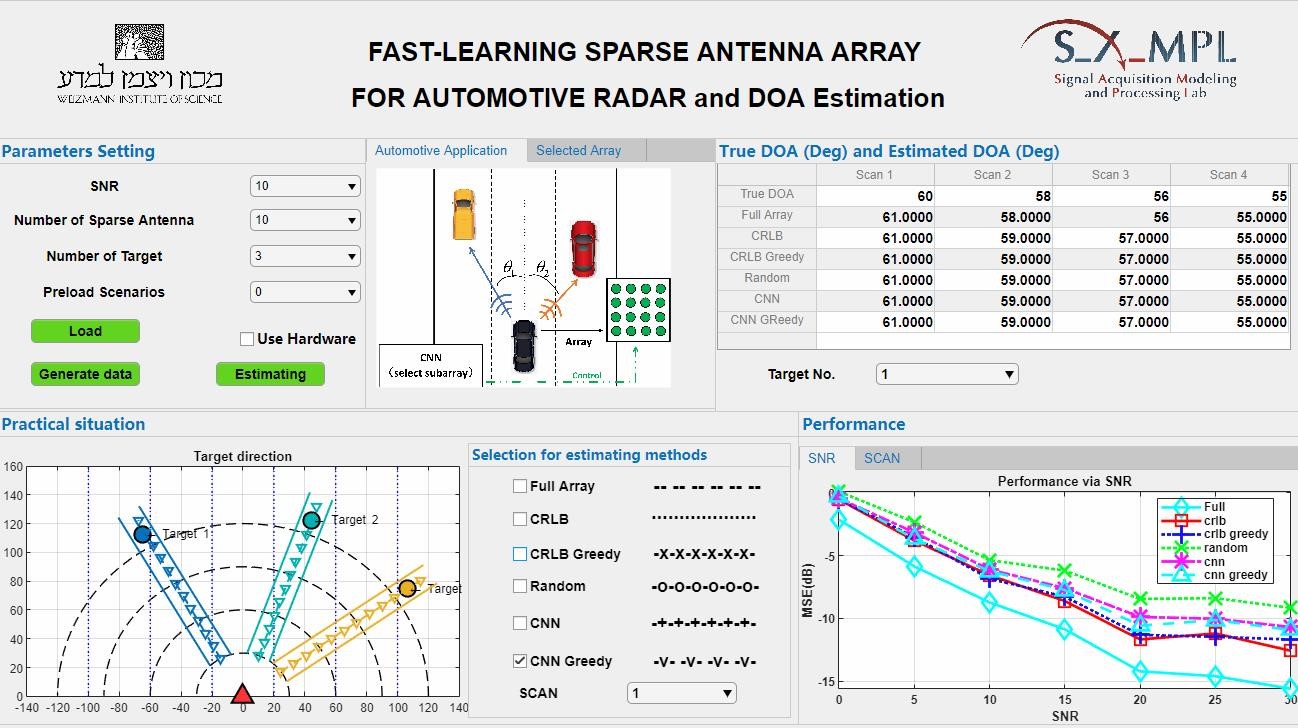
Performance Plots:
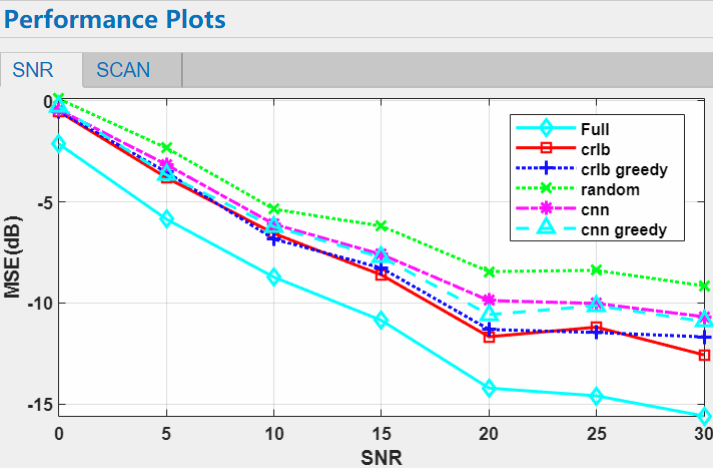
References:
- A. M. Elbir, K. V. Mishra, and Y. C. Eldar, “Cognitive Radar Antenna Selection via Deep Dearning,” IET Radar, Sonar and Navigation, vol. 13, issue 6, pp. 871-880, June 2019.
- A. M. Elbir, S. Mulleti, R. Cohen, R. Fu, and Y. C. Eldar, “Deep Sparse Array Cognitive Radar,” in Proc. Int. Conf. Sampling Theory Appl. (SampTA), 2019.
- S. Mulleti, C. Saha, H. S. Dhillon, and Y. C. Eldar. “A Fast Learning Sparse Antenna Array,” in Proc. IEEE Radar Conf., 2020.
- S. Mulleti, Y. Shavit, M. Namer, and Y. C. Eldar, "Hardware Demonstration of a Scalable Cognitive Sparse Array", IEEE Radar Conference (RadarConf), September 2020.
